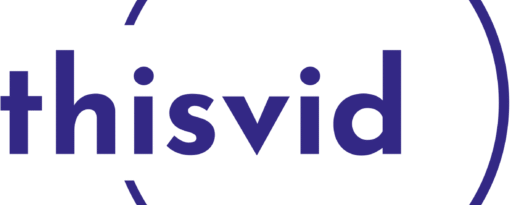RASP Technology Is A Future of Web Application Security
With web applications becoming ever more critical to business operations, new security challenges are emerging. Traditional measures, such as firewalls and intrusion detection systems are no longer enough to protect against advanced threats; as a result, organizations are turning to RASP security technology in order to strengthen their application security posture.
RASP (Runtime Application Self-Protection) is an emerging security technology designed to safeguard web applications in runtime. RASP technology monitors application behavior in real time and detects attacks before they cause any significant harm.
In this article, we will examine the future of web application security and explore RASP technology’s predicted role within it. We will consider its benefits, real-life examples of its implementation and best practices for incorporating RASP technology into an organization’s security infrastructure.
Traditional Security Measures Are No Longer Sufficient
Traditional approaches to web application security rely on perimeter security measures like firewalls, intrusion detection systems, and access controls that are intended to ward off external threats while denying unauthorized entry to networks. However, such approaches no longer suffice in protecting web applications against external threats and prevent unauthorizable access.
But as cyber-attacks evolve into increasingly sophisticated attacks, traditional security measures have proven insufficient. Now attackers are finding ways to bypass perimeter protection measures by exploiting vulnerabilities within web applications themselves and exploiting vulnerabilities within them directly.
Web applications provide direct access to valuable data and systems, making them the prime target for attackers. According to the 2021 Verizon Data Breach Investigations Report, 39% of breaches reported were web application related.
Benefits of RASP Technology: Increased Application Security and Performance RASP technology was created to address the limitations of traditional security measures by targeting applications themselves. RASP solutions operate within each application itself, monitoring its behavior in real time while protecting it against threats like attacks in real time.
RASP technology can bring many advantages. By monitoring an application during runtime, RASP technology can detect and stop attacks before they cause damage – this real-time protection is invaluable when protecting against threats that evade traditional security measures.
RASP technology also offers greater insight into application behavior, providing organizations with more visibility into potential vulnerabilities that need addressing immediately for improved application performance and enhanced security. This can result in both improved app performance as well as increased security.
Real-World Examples of RASP Technology in Action
RASP technology has become more widely adopted over time by numerous organizations such as Airbnb, Intuit, and DocuSign – among many others.
Airbnb utilized RASP technology to protect their mobile app against attacks, such as SQL injection and cross-site scripting. RASP technology could detect and block these attacks in real time, giving Airbnb another layer of defense.
Intuit, a financial software company, implemented RASP technology to safeguard their applications against attacks. They were concerned about customer data protection and wanted to ensure they could defend against account takeover or fraud schemes; RASP could detect and block attacks real time providing Intuit with increased application security.
DocuSign, a digital signature company, implemented RASP technology to protect its web application against attacks. DocuSign was concerned with protecting sensitive customer data and needed assurance that its application would remain protected against cross-site scripting and injection attacks – something RASP technology helped with by detecting and blocking these attacks in real time, providing an additional layer of defense.
Trends and Predictions for RASP Technology
RASP technology remains an emerging technology, but is poised to play an increasingly prominent role in web application security in coming years. Market growth for RASP solutions should be spurred by increasing adoption of cloud-based apps as well as threats such as cyber attacks.
One trend likely to foster RASP technology adoption is an increasing focus on DevSecOps – an approach to software development which integrates security into the development process – RASP technology is ideal for this approach, providing real-time security monitoring and being easily integrated into this approach.
RASP technology may also gain momentum with the increased use of microservices architecture. Microservices architecture is a method for software development that breaks apps down into more manageable components; RASP technology can be integrated into each of them to provide real-time monitoring and protection.
RASP technology may also benefit from the rise of APIs (Application Programming Interfaces). APIs connect different applications and systems together, yet are potentially vulnerable to attacks like injection attacks and data breaches. RASP technology can protect APIs by offering an additional layer of protection.
Factors to Consider when Implementing RASP Technology When it comes to implementing RASP technology, many factors need to be taken into account. One such consideration is which applications you’ll protect. RASP technology works best at protecting web apps; however, mobile applications and APIs may also benefit from its protection.
Another consideration when purchasing RASP solutions is how much customization will be necessary. While RASP solutions can be customized to meet specific organizational needs, this process can be complex and time consuming.
Integration of RASP Technology With Existing Security Measures
Integrating RASP technology with existing security measures is another key consideration. RASP technology can supplement traditional approaches like firewalls and intrusion detection systems by adding another layer of protection against intrusion attempts.
Best Practices for Optimizing RASP Technology
In order to maximize the effectiveness of RASP technology, organizations should follow certain best practices. These include regularly updating RASP solutions so they are capable of detecting and blocking threats as soon as they arise;
- Integrating RASP technology into the development process ensures applications are protected from their inception. Also providing regular training to employees ensures they understand the significance of application security and are capable of identifying any vulnerabilities within it.
- Conduct regular security audits to detect vulnerabilities and effectively address them.
- As cyber attacks increase in frequency and sophistication, organizations must implement additional security measures to safeguard themselves against them. RASP technology offers additional layers of defense while providing improved application security and performance.
Conclusion
RASP technology is an emerging security solution expected to play an increasingly crucial role in web application security with Appsealing. RASP offers real-time security monitoring and protection capabilities, enabling organizations to detect attacks before any harm comes their way.






